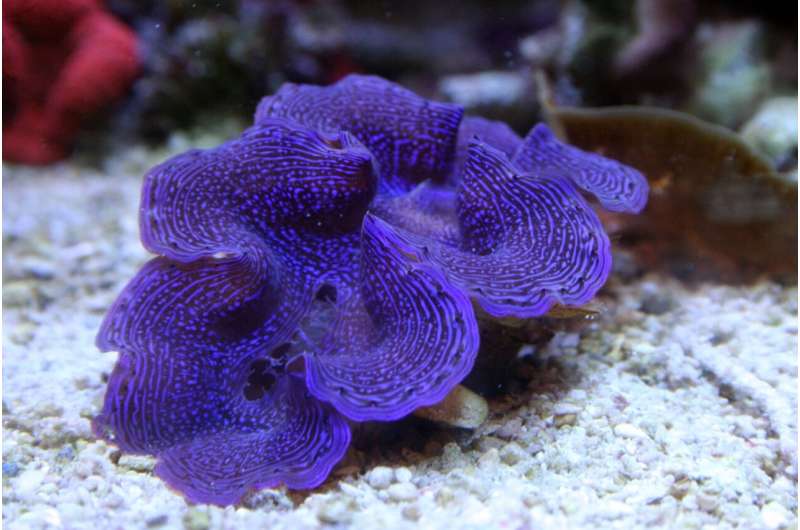Iconic reef giants not immune to climate's harmful touch

Museum of Tropical Queensland and ARC Centre of Excellence for Coral Reef Studies at James Cook University (Coral CoE at JCU), Senior Curator of Marine Invertebrates, Dr. Sue-Ann Watson said that to date, Australia has done a good job in protecting giant clams that inhabit the Great Barrier Reef.
"But these animals are now threatened by huge environmental adversaries—global warming, marine heatwaves and ocean acidification. Just like coral, these changes lead to clams bleaching, and reduce growth and survival rates," Dr. Watson said.
"This paper shows that the challenge now is to protect the remaining wild populations of giant clams and their coral reef habitats in the hope that global emissions, and thus environmental conditions, stabilize."
As the largest living bivalve mollusc on Earth, the giant clam can weigh over 250kgs and can grow to over a meter long. Similar to coral, giant clam ancestors evolved around 50 million years ago, live long lives stationary on the ocean floor and have a 'solar-power' capability to receive energy via photosynthesis.
The paper boldly considers novel ways of assisting giant clams through the current climate crisis.
"Right now, strategies like local water quality management and utilizing complex technology for breeding programs will buy some time for these reef giants and help them to persist through this difficult period until emissions are reduced," Dr. Watson said.
Co-author of the paper from National University of Singapore and 2021 Pew Marine Fellow in Marine Conservation, Dr. Mei Lin Neo said further research is required to understand the effects of climate change on giant clams.
"Due to their long lifespans, giant clams are much more susceptible to threats such as rising seawater temperature. By understanding their biological responses to these environmental stressors, we can better inform future conservation strategies and consider new, innovative approaches," said Dr. Neo.
Queensland Museum Network CEO Dr. Jim Thompson said as the only invertebrate among the eight 'iconic' creatures of the Great Barrier Reef it's vital every effort is made to protect their future.
"This paper highlights the importance of collaborating with other researchers and institutions to help understand the challenges that face our marine life so we can implement the best course of action to protect them in the future."
Queensland Chief Scientist Prof Hugh Possingham welcomed the research on the giant clam to assist in conservation efforts.
"Climate change is impacting our marine ecosystems and hence threatening multi-billion dollar industries such as tourism and fisheries.
"I applaud the great work of Queensland scientists who are studying species that live on the Great Barrier Reef to ensure we can make effective decisions to protect them," said Prof Possingham.
Other initiatives such as recognizing giant clams as a flagship species for coral reefs may further help to improve the prospects of these charismatic megafauna over coming decades.
More information: Sue-Ann Watson et al, Conserving threatened species during rapid environmental change: using biological responses to inform management strategies of giant clams, Conservation Physiology (2021). DOI: 10.1093/conphys/coab082
Provided by Queensland Museum



















